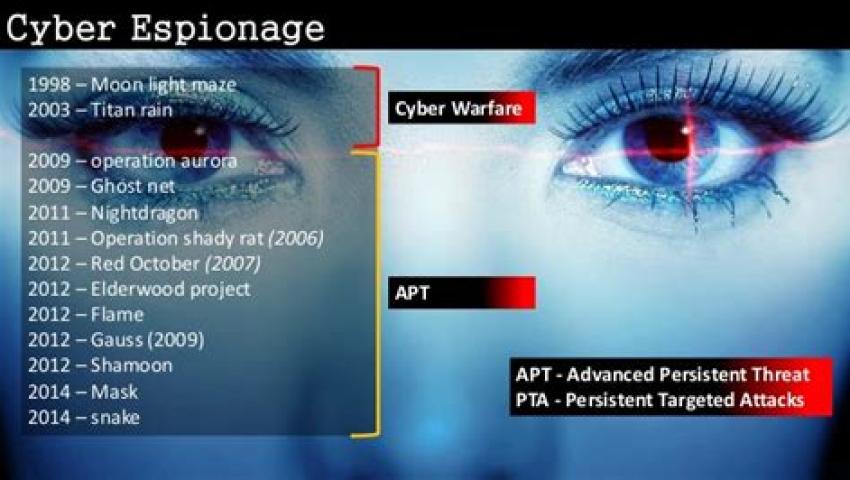
Duqu: The Sophisticated Cyber Espionage Tool
Duqu is a type of malware that is considered to be a precursor to more advanced threats, like Stuxnet, with which it shares several characteristics. The malware is a Remote Access Trojan (RAT), meaning it gives attackers remote access to infected systems and allows them to control the compromised machines.
Introduction
Duqu is a sophisticated and highly targeted cyber espionage tool that was discovered in 2011. Although similar to the infamous Stuxnet worm in terms of its technical design, Duqu has a different set of objectives, primarily focusing on espionage rather than sabotage. This article explores the workings of Duqu, its capabilities, the threat it poses to organizations, and real-world case studies where it was used.
Duqu is believed to have been developed by a state-sponsored group, and its modular architecture and stealthy techniques make it a prime example of advanced cyber espionage. Over the years, it has raised significant concerns about the vulnerabilities in critical infrastructure and the increasing sophistication of cyber threats.
What is Duqu?
Duqu is a type of malware that is considered to be a precursor to more advanced threats, like Stuxnet, with which it shares several characteristics. The malware is a Remote Access Trojan (RAT), meaning it gives attackers remote access to infected systems and allows them to control the compromised machines. Unlike Stuxnet, which was designed to target and disrupt specific industrial systems (notably Iran’s nuclear program), Duqu is primarily designed for information gathering and intelligence collection.
Duqu was named after the “Duqu” folder it created on infected systems, which contained a range of malicious tools designed to help attackers conduct surveillance and gather sensitive data. Its stealthy design allows it to operate without being detected for long periods, which makes it an ideal tool for cyber espionage.
Key Features of Duqu
- Modular Design: Duqu’s modular architecture enables it to be adapted for different missions and environments. The malware consists of multiple components that can be deployed as needed, allowing operators to tailor its functionality to specific targets.
- Rootkit Capabilities: The malware includes rootkit-like components that help it hide from detection by security software. It can operate undetected for long periods, siphoning off information from compromised systems without raising alarms.
- Keylogging and Data Exfiltration: Duqu can log keystrokes, capture screenshots, and monitor communications to gather sensitive information from its targets. It also has the ability to exfiltrate stolen data back to command and control (C&C) servers.
- Targeted Attacks: Unlike widespread, indiscriminate malware campaigns, Duqu’s attacks were highly targeted, focusing on specific organizations or sectors that were of interest to the attackers, such as government institutions, telecommunications, and critical infrastructure.
- Self-Propagation: Although Duqu was initially spread using infected USB drives or vulnerabilities in Microsoft Windows, it had the ability to spread to other machines on the same network, making it more efficient in large organizations.
How Duqu Works
Duqu operates through a variety of infection vectors and works silently within networks, typically collecting data and sending it back to the attackers. Here’s a breakdown of how Duqu typically works:
- Initial Infection: Duqu’s primary infection method is believed to be via spear-phishing emails, where malicious attachments or links are used to exploit vulnerabilities in the victim’s operating system. Once the malware is executed, it begins its silent operation on the target machine.
- Persistence: After infection, Duqu installs its components, which include tools for maintaining persistence on the compromised machine. These components hide deep within the system, making it difficult for antivirus software or system administrators to detect the malware.
- Communication: Duqu communicates with its C&C servers to receive instructions and send back the data it collects. This communication is often encrypted to avoid detection by network monitoring systems.
- Data Collection: Duqu gathers sensitive information by recording keystrokes, taking screenshots, capturing documents, and monitoring communications. The malware focuses on high-value data that could be useful for espionage, such as intellectual property, trade secrets, or government communications.
- Exfiltration: The stolen data is then sent back to the attacker’s remote servers, typically in small, encrypted chunks to avoid detection. The malware can exfiltrate information over extended periods, maintaining low visibility while stealing large amounts of data.
Attribution and Suspected Origins
The sophistication of Duqu and the targets it focused on have led many experts to suspect that it was developed by a nation-state actor or a group with significant resources. Some cybersecurity researchers believe that Duqu shares similarities with Stuxnet in terms of design and objectives, suggesting that both were created by the same group, likely the United States or Israel.
Evidence from Duqu’s operations also points to its use in cyber espionage campaigns against specific industries and government entities, reinforcing the theory that it was a tool for gathering strategic intelligence rather than causing direct damage. Duqu’s behavior suggests that it was a precursor to more advanced tools like Stuxnet and other nation-state-backed cyber weapons.
Real-World Case Studies of Duqu Attacks
Case Study 1: Targeting Iranian Industrial Systems
In 2011, shortly after the discovery of Stuxnet, a variant of Duqu was found targeting industrial systems in Iran. This attack, often referred to as part of the "Stuxnet family" of malware, involved espionage activities targeting critical infrastructure.
Attack Methodology
- Spear-Phishing: The attackers used spear-phishing emails with infected attachments to gain access to computers in Iranian industrial facilities, including those associated with the country’s nuclear program.
- Targeted Espionage: Duqu’s modular nature enabled it to steal sensitive data related to the design and functioning of industrial control systems, which could be later used for further sabotage operations or intelligence gathering.
- Data Exfiltration: The malware exfiltrated technical specifications, blueprints, and sensitive documents related to Iran's nuclear enrichment program. These documents were believed to be used to gather intelligence on Iran’s infrastructure and to assist in further cyber sabotage operations.
Impact
The espionage campaign was part of broader efforts to disrupt Iran’s nuclear ambitions, with Duqu playing a key role in gathering intelligence that would later inform the Stuxnet attack. The stolen data may have also been used for strategic purposes in international negotiations.
Case Study 2: Attacks on European and Middle Eastern Telecoms
Another prominent use of Duqu was targeting telecommunications companies in Europe and the Middle East. These attacks were not aimed at damaging infrastructure, but rather at gathering intelligence related to global communications networks.
Attack Methodology
- Malicious Email Attachments: Duqu was spread via spear-phishing emails to employees of telecom providers. These emails often contained documents or links disguised as legitimate communications, such as invoices or contracts.
- Surveillance: Once installed, Duqu captured sensitive data from the internal communications systems of the telecom companies, including emails, client information, and trade secrets. The data was siphoned back to the attackers over encrypted channels.
- Network Mapping: The attackers used Duqu’s capabilities to map the internal networks of the telecom companies, which could help in future attacks or in gaining a deeper understanding of global telecom infrastructure.
Impact
The campaign compromised sensitive communications within the telecom industry, potentially giving attackers access to corporate strategies, trade secrets, and government communications. This kind of espionage can have significant geopolitical implications, especially if the stolen data is used to gain strategic advantages in international affairs.
Case Study 3: Attacks on the Indian Government and Military
In 2013, Duqu was also linked to a series of attacks targeting government agencies and military contractors in India. These attacks were focused on stealing sensitive political and military information.
Attack Methodology
- USB Drive Infections: In some instances, Duqu spread via infected USB drives, a method often used in targeted attacks on government systems.
- Surveillance and Data Collection: Once installed, Duqu was used to monitor emails, collect files, and track the activities of government officials. This type of surveillance could provide strategic intelligence on government operations and military plans.
Impact
The Duqu attacks targeted high-value government data, which could have been used to influence policy decisions or gain military advantages. The stolen data might have provided adversaries with valuable insights into India’s defense capabilities and political landscape.
Conclusion
Duqu represents a new era of cyber espionage, showcasing the increasing sophistication and precision of state-sponsored malware. With its modular architecture, stealthy behavior, and focus on intelligence gathering, Duqu demonstrates the capabilities of cyber threats in targeting high-value organizations, government institutions, and critical infrastructure.
The real-world case studies outlined here, from Iran’s nuclear program to the telecom industry and government targets, show the vast potential of Duqu in espionage activities. As cyber threats evolve, it is critical for governments, businesses, and individuals to stay vigilant and develop robust defenses to counter advanced malware like Duqu, which can remain undetected for long periods while exfiltrating large amounts of sensitive data. The ongoing arms race between cyber attackers and defenders will continue to shape the future of global security.
Alex Ananenko
Leave a comment
Your email address will not be published. Required fields are marked *


